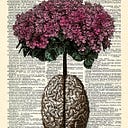Member-only story
The Molds of Therapy
3 Common Types of Therapy Sessions
A therapy session is like a clay sculpture, shaped by the hands of both the therapist and the client. The therapist brings their techniques and personal style, while the client brings their present feelings and concerns. Together, they mold the session into a unique product.
That being said, these ‘molds’ tend to adhere to one of three types, corresponding to three general categories of therapy sessions: problem-solving, venting, or exploring.
‘Problem-Solving’
This category is probably what most people associate with therapy. The client comes into the session with a specific problem — episodes of anxiety, trouble sleeping, conflicts in their relationship, and so on — and the therapist helps them to resolve it. By the end of the session, the client expects to have gained some clarity about the problem, along with options for how to deal with it.
This type of session is usually fairly structured. Once a specific problem is identified, the client and therapist will examine its history, any important factors, and the client’s perspectives and assumptions about it. Finally, a concrete action-plan is developed, whose results are discussed during the next session.
